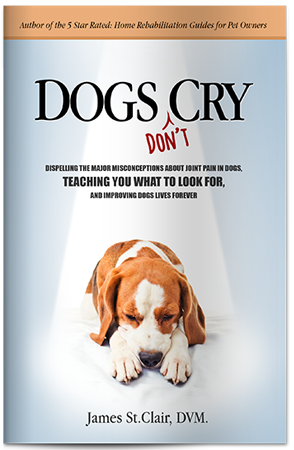Early Indicators of Joint Problems
#1 Overall slowing down:
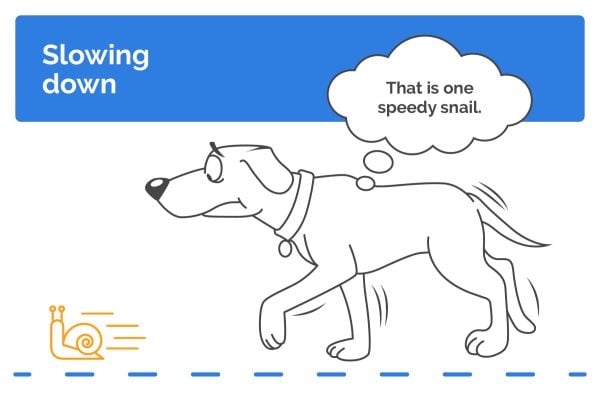
As our dogs get older, we often assume that “slowing down” is just a sign of them “getting older.” Don’t make this mistake. It may be that they are only slowing down because they are in pain or discomfort as they are moving around. Joint discomfort is almost 99% of the time a silent problem in dogs.
#2 Slow to get up or down:
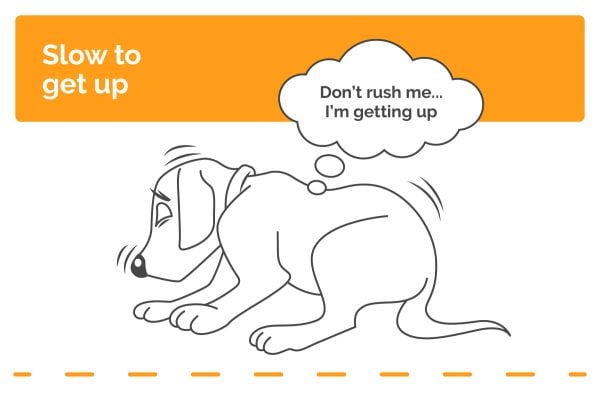
This may seem self-explanatory, but it is often very subtle in the early stages of joint health problems. This is the most common clinical sign noted by pet owners.
#3 Avoiding stairs or slow to go upstairs.
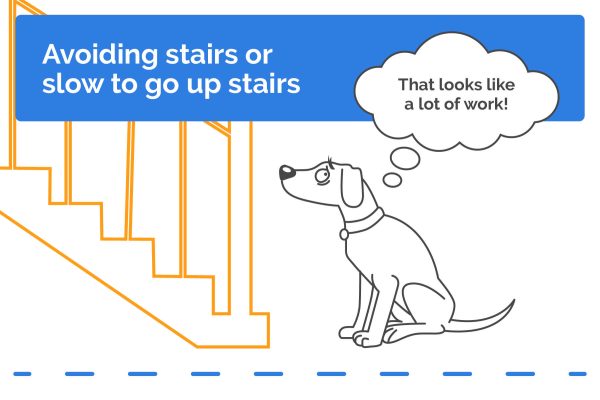
This is often one of the first signs your dog may show you. In this case, what was once a normally easy task quickly becomes a challenge.
#4 Avoiding jumping in the car, or on beds, or couches.
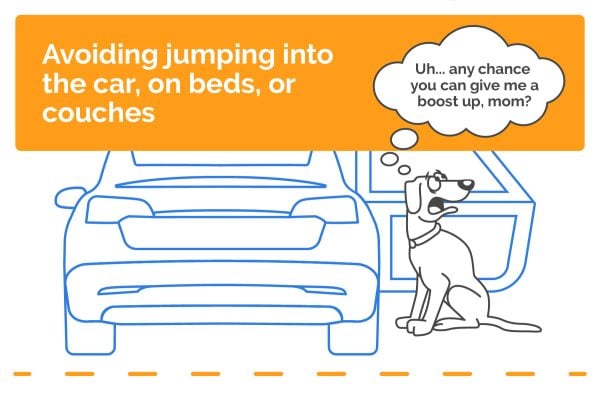
Like stair avoidance, the fourth sign of chronic joint pain is slightly more obvious to detect. But again, as with nearly all of these signs, the early stages can be subtle.
#5 Sleeping more and/or sleeping longer:
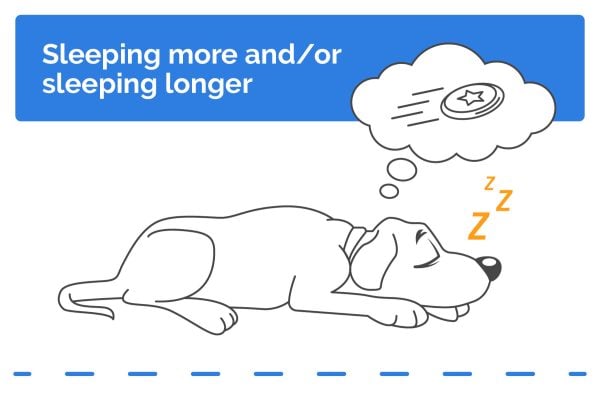
People will often notice their dogs sleeping more, especially in the morning. They will often be reluctant to get out of bed. This can be very subtle initially, so you must be sensitive.
#6 Reluctance to go on walks or walk less than normal:
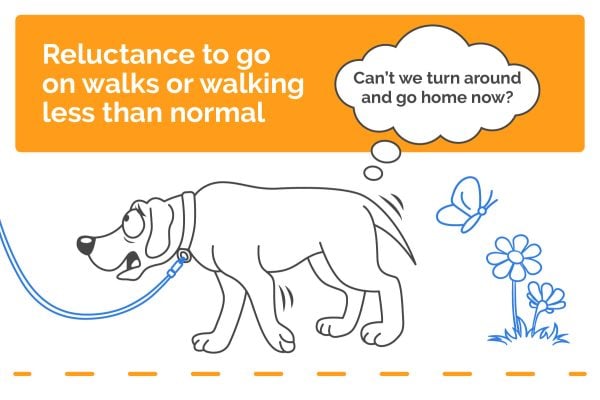
Often pet owners will notice that their dog is reluctant to go the usual distance. Usually, pet owners notice a trend, not a one-day or one-time episode.
#7 Closed hind leg stance:
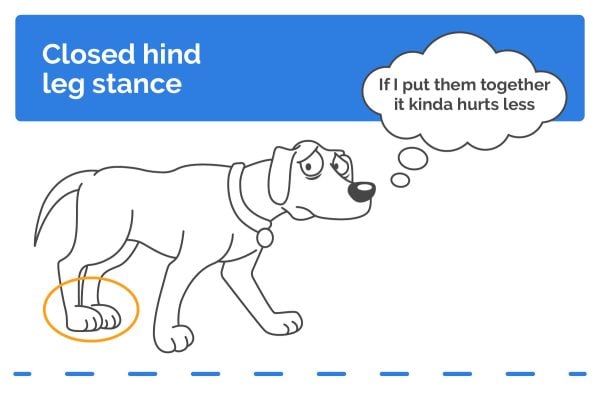
This is probably the most straightforward sign to notice for a trained eye and by far the most commonly missed by pet owners. This only applies if your dog’s joint problems are mostly in the hind legs, and it can be very subtle in the early stages. Looking closely, you will appreciate that while standing at rest, your dog’s back legs will be closer together. Dogs do this to take the weight off of their hind legs and shift some of their weight to their more comfortable front end.
#8 Wide front legs stance:
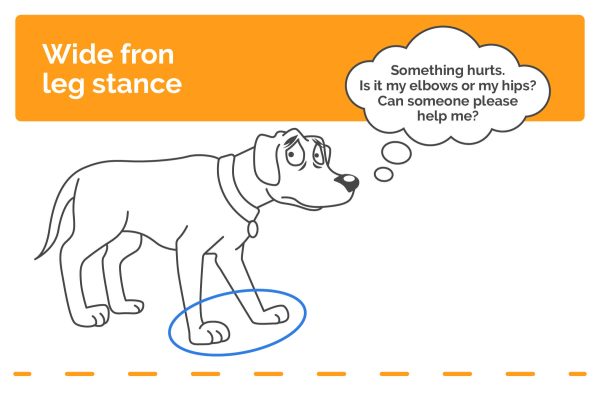
You can spot this when the elbows are pushed out to the sides giving the dog a wide stance in the front. Though this can indicate a front leg problem, often it is secondary to the dog having hind leg joint problems and trying to compensate by shifting the weight to the front legs. This can be very subtle and sometimes is only seen on one side.
#9 Bunny hopping:
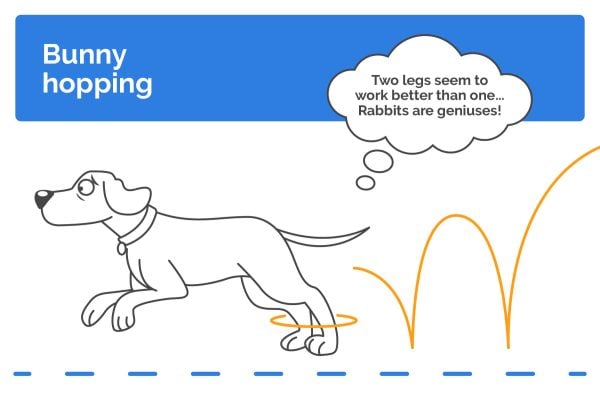
Pet owners often notice their dog using their hind legs together as one while running. This is commonly referred to as “bunny hopping” because the dog looks like a rabbit in its hind end. This is often a telltale sign in young dogs that they might have had hip joint issues.
#10 Limping:
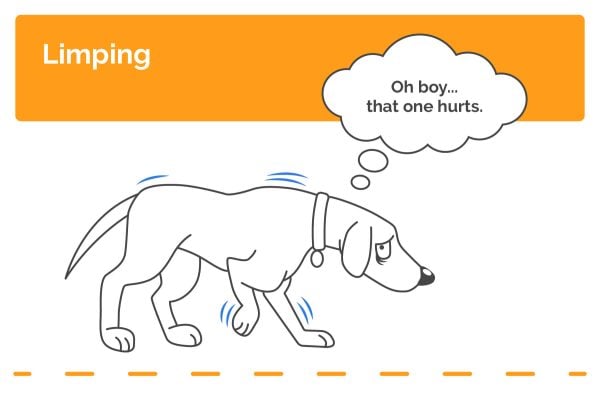
Of course, this is an obvious one. If you notice that your dog is limping on just one limb, it would be a good idea to contact your veterinarian for an evaluation. Limping can be a result of many different problems.
#11 Stiffness:
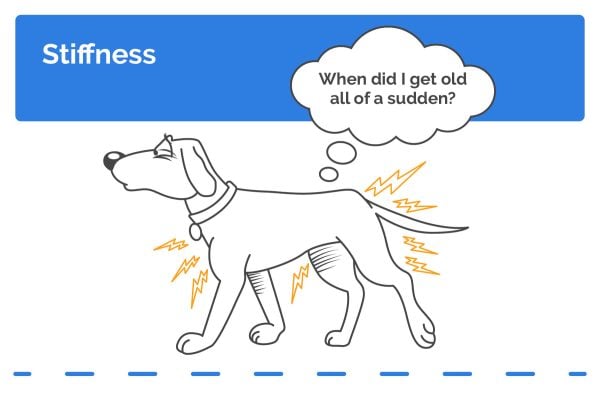
Sometimes you can see that your dog’s gait may be a little more stiff than usual. Or you might notice your dog is stiff after getting up from a lying-down position.
#12 Muscle loss (muscle atrophy):
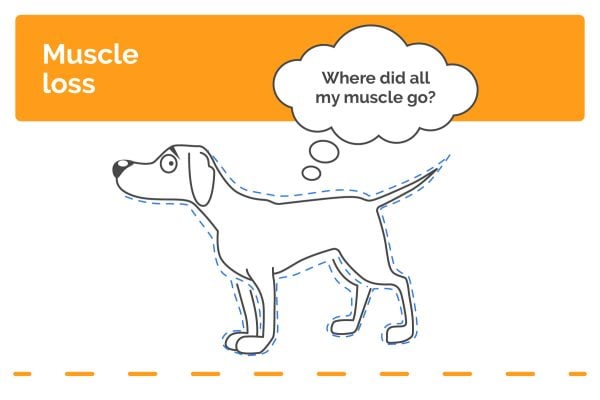
We are all familiar with the saying, “If you don’t use it, you lose it.” Well, the same is true for dogs. They will also lose muscle mass due to decreased activity as their joint health slowly declines. Therefore it is a good idea to run your hands over your dog’s body every once in a while, especially the leg muscles. Everything should be solid and symmetrical. This video shows you how to measure your dog’s muscle mass.
Other Signs
In addition to these 12 signs, look for other behaviors that may indicate joint pain and discomfort.
Excessive grooming, joint licking, or chewing:
Sometimes if a particular joint is bothering your dog, they may begin to lick at it, especially during times of rest when they are lying around. They do this to pacify the discomfort. You also may notice a color change in the fur around this joint from saliva staining.
Shaking or trembling:
If your dog is shaking or trembling more often than usual, especially at rest, this could indicate underlying chronic pain.
Daily habit, sleeping, eating, and drinking changes:
Is your dog acting different lately? It could be due to chronic pain. The key here is to look for a behavior change. If your dog takes it easy after a day of excessive exercise, that can be normal. But if they’re routinely sleeping more (especially sleeping late in the mornings), this can be a sign they’re in pain and are trying to avoid activity and heal. Similarly, a dog eating or drinking less than usual may be depressed from the pain or simply reluctant to move around.
Behavioral changes:
Chronic pain can cause emotional changes in your dog, including detachment and uncharacteristic aggression. This would be a red flag, especially for a dog who is typically very friendly and outgoing. A dog that doesn’t feel good may stop running to greet you at the door, try to avoid contact, or even become aggressive. If your dog is hiding or being atypically antisocial, it could indicate that they’re uncomfortable. Any noticeable and sustained change in behavior can be a cause for concern.
Yawning
Sometimes a yawn means a tired pup, but excessive yawning can be a sign your dog is under the stress of chronic pain. Yawning is one way an anxious dog will attempt to calm itself down, so if you notice excessive yawning over a long period, it may signal your pet is stressed.
Other vocalizations:
Groaning or grunting when going to lie down, as well as other vocalizations, indicate the potential presence of pain, chronic or otherwise.
Next Steps:
If you notice any of these signs in your dog, schedule an appointment with your veterinarian for some further investigation, diagnosis and to come up with a comprehensive treatment plan moving forward. By educating yourself and being proactive in this way, you’re doing one of the best things you possibly can for your beloved canine companion and potentially saving them from ever having to suffer in silence.














